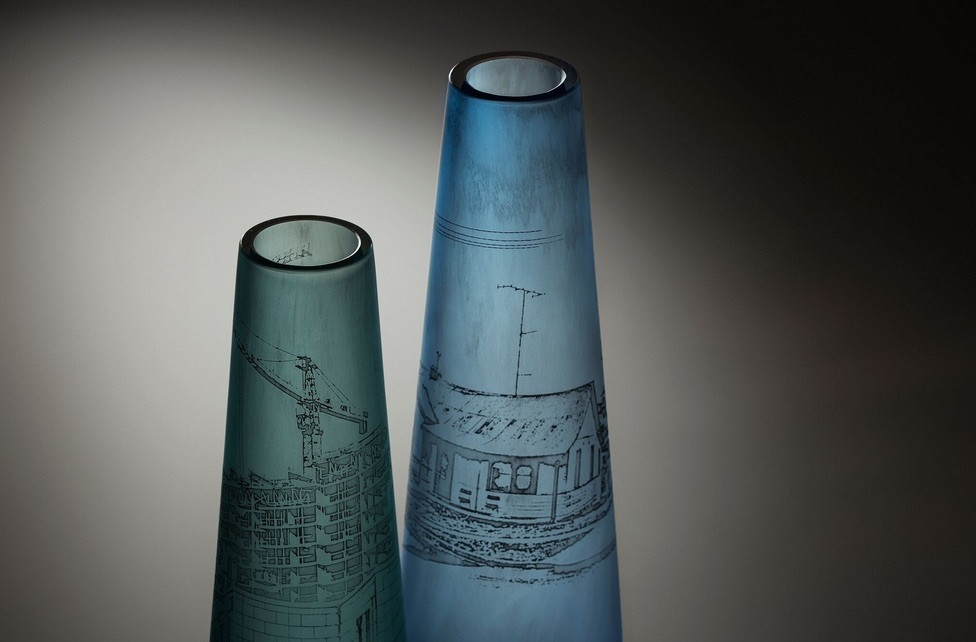GLASS Quarterly Hot Sheet: What have you been working on?
Jeremy Lepisto: Currently, my time is divided between my full-time position at the Australian National University’s School of Art and Design as a Technical Officer in the Sculpture Workshop as well as the School’s Work Health and Safety Officer, completing a long-overdue PhD degree, fabricating for others. and making new gallery work.
As part of my PhD research, I'm creating a collection of stacking sculptures that compile together (physically and metaphorically) into a mixed-media series of sculptures. The shape and structure of these sculptures are based on the form of a common shipping container. This research looks to explore the duality of effects delivered to the agencies of people/places/objects through the utilization of the modern shipping container.

I'm also working on fabrication for others, and have built a small studio (Workshop Level) in Queanbeyan, NSW where I make my own work and also glass and metal projects for others. I recently made a custom light sculpture for a designer (Trent Jansen) that incorporated a tall blown cone covered in over 6000 hand cut glass shards. I've also just completed a custom-created lighting feature for a client utilizing a fabricated steel armature to suspend a set of cut and cold-worked scientific flasks that the client had used in their lab. I'm currently working on prototyping a glass model of the sun for the local science museum (Questacon) to have on permanent display in their foyer to describe the solar power usage of their building to visitors.
I have work in two shows and am working on a few one-off works for a couple themed exhibitions (coming up later in the year) as well as new ideas that have emanated out of my research work but extend beyond its bounds. A couple of these ideas have recently coalesced into two new series (the "Contour Series" and the "Stack Series").
Glass Quarterly Hot Sheet: What have you seen lately that has inspired new directions in your work?
Jeremy: While researching the unintended duality of consequences that are delivered along with the intended contents of the modern shipping container, I began to sketch sculptural forms that addressed the idea of "work." These ideas have been reinforced by my move to Australia, which required me to build new ties with individuals and industries here so that I could be a constructive and connected component of this creative culture.

These new ideas still speak about the structures and timelines of the built environment, but now the conversation is more focused on the interwoven strands between people (or places of production) looking to hold tight or extend their separate lines of position and prosperity.
The shapes of these ideas have taken the form of sheet glass racks, a simplified sheet glass roller, toolboxes, chimneys and buildings.
Glass Quarterly Hot Sheet: Where can your work be seen?
Jeremy: Currently, one of my PhD research works can be seen at the Gallery of Western Australia (Perth, AUS) as part of the Tom Malone Prize 2018 finalist exhibition. This work is titled Alongside. It's a small shipping container that is made to also look like a hallway. On an interior wall is an illustrated image of my old studio building in America. This image looks as though it is being illuminated by an image of myself standing in the hallway. The image of the building presents like a painting and refers to the idea of recollection and the relocation of my practice through the utilization of a shipping container. On the exterior of the shipping container (and in place of a normal identifier code for the container) are the inscribed dates of when my studio practice was held in that place.

I also had a solo show open last week at the Beaver Galleries here in Canberra (AUS). I called the show "Contour" and wanted to extend the notion of contour by referencing the timelines that are affected, activated, supported or that support an industrial form’s function and future. I created two new series of work that look to address this theme. The "Contour Series" works are fused slabs that have been cut into the simplified contour of an industrial building. A black border highlights the edge of each bent building’s form. Held within each form is a contour drawing that is an imagined look at the extended outline of activity and impact of each structure.

The second series is the "Stack Series," which incorporates a sheet metal roof line and a blown-glass chimney. A translucent and soot covered chimney rises above each roof to reference the effort the building emits. Upon the surface of each glass stack is a rendered image of a place beyond the building that is enveloped by the activity of this place and whose future is equally affected by whether the smoke will continue to raise up and out of its rim.







